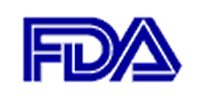
 Because
of the Dietary Supplement Health and Education Act of 1994, dietary supplements
are not subject to the pre-market scrutiny that is required of new foods
or new drugs. However, according to the Act, these dietary supplements
can be restricted if their ingredients are shown to pose a health risk
(DSHEA synopsis, 1995). After receiving over 800 reports linking adverse
physiological effects to ingestion of ephedrine-based dietary supplements
between 1993 and 1997, the FDA determined that this was a public health
concern, justifying further investigation into the matter. In 1996, the
Food Advisory Commitee convened to address the problem. Over half of the
committee were of the opinion that ephedrine was unsafe and should be
removed from the market entirely, while the rest felt that when present
in smaller doses, ephedrine did not constitute a health concern. Overall,
the committee concluded that as a dietary supplement, ephedrine confers
no benefits (GAO, 1999). As a result, in 1997, the FDA published a proposal
for ephedrine regulation in the Fedreral Register, prohibiting any dietary
supplements containing greater than 8 milligrams of ephedrine. Furthermore,
the FDA also proposed prohibition of combinations of ephedrine with other
known stimulants, such as caffeine. This was the first time the FDA had
acted on the DSHEA of 1994 (Turk, 1997). Having been asked by the House
of Representatives' Committee on Science to analyze the FDA's basis for
such a proposal, the United States General Accounting Office published
a report criticizing the FDA's basis for its conclusion, stating that
FDA's treatment of evidence was unscientific and hasty (GAO, 1999). In
response to the GAO's criticism, the FDA withdrew the 8 milligram criteria,
along with the proposed restriction on ephedrine/stimulant combinations,
from its proposed rule, admitting that the information available in 1997
was not sufficient to justify such a regulation (FDA, 2000). In defense
of the FDA, the GAO did maintain that the FDA was justified in its concern
raised by the huge number of adverse event reports (GAO, 1999). The FDA
is continuing investigation, having requested that independent conduction
of review and analysis of the numerous reports be performed (Haller and
Benowitz, 2000).
Because
of the Dietary Supplement Health and Education Act of 1994, dietary supplements
are not subject to the pre-market scrutiny that is required of new foods
or new drugs. However, according to the Act, these dietary supplements
can be restricted if their ingredients are shown to pose a health risk
(DSHEA synopsis, 1995). After receiving over 800 reports linking adverse
physiological effects to ingestion of ephedrine-based dietary supplements
between 1993 and 1997, the FDA determined that this was a public health
concern, justifying further investigation into the matter. In 1996, the
Food Advisory Commitee convened to address the problem. Over half of the
committee were of the opinion that ephedrine was unsafe and should be
removed from the market entirely, while the rest felt that when present
in smaller doses, ephedrine did not constitute a health concern. Overall,
the committee concluded that as a dietary supplement, ephedrine confers
no benefits (GAO, 1999). As a result, in 1997, the FDA published a proposal
for ephedrine regulation in the Fedreral Register, prohibiting any dietary
supplements containing greater than 8 milligrams of ephedrine. Furthermore,
the FDA also proposed prohibition of combinations of ephedrine with other
known stimulants, such as caffeine. This was the first time the FDA had
acted on the DSHEA of 1994 (Turk, 1997). Having been asked by the House
of Representatives' Committee on Science to analyze the FDA's basis for
such a proposal, the United States General Accounting Office published
a report criticizing the FDA's basis for its conclusion, stating that
FDA's treatment of evidence was unscientific and hasty (GAO, 1999). In
response to the GAO's criticism, the FDA withdrew the 8 milligram criteria,
along with the proposed restriction on ephedrine/stimulant combinations,
from its proposed rule, admitting that the information available in 1997
was not sufficient to justify such a regulation (FDA, 2000). In defense
of the FDA, the GAO did maintain that the FDA was justified in its concern
raised by the huge number of adverse event reports (GAO, 1999). The FDA
is continuing investigation, having requested that independent conduction
of review and analysis of the numerous reports be performed (Haller and
Benowitz, 2000).
FDA logo used pending permission from the Food and Drug Adminstration.
© Copyright 2001 Department of Biology, Davidson College, Davidson, NC 28036. Send comments, questions, and suggestions to: jokogoy@davidson.edu





